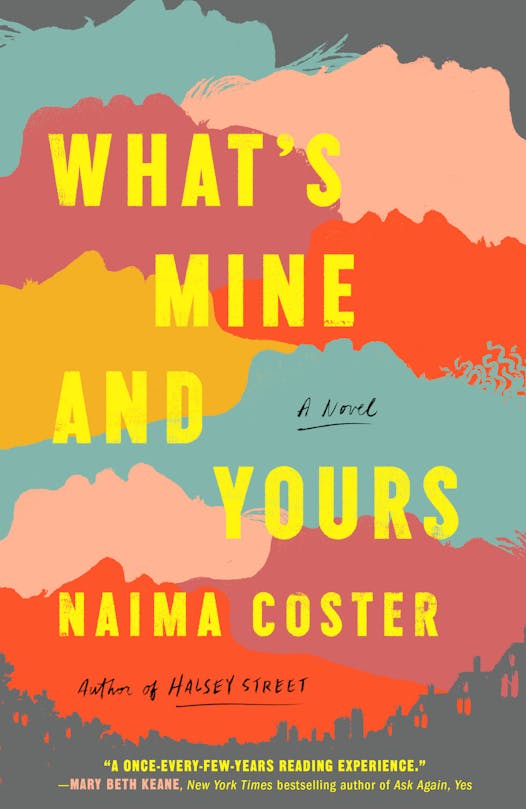It's a truism that any writer who has survived their childhood has enough material to last for the rest of their days. In her latest novel, "What's Mine and Yours," Naima Coster explores how the incidents of anyone's childhood stand both to propel and to bind them for the remainder of their lives, the consequences of early happenstances, griefs and betrayals kicking off a course that perhaps no individual can fully evade.
In 2020, the National Book Foundation honored Coster as one of their 5 Under 35, and her debut novel, "Halsey Street," about gentrification in the Bedford-Stuyvesant neighborhood of Brooklyn, was a finalist for the 2018 Kirkus Prize for fiction.
Here, in her elaborately constructed, multifamily saga of a second novel, Coster examines similar questions of erasure and inclusion, as well as how race and class impact every aspect of her characters' lives. Primarily set in a town known only as "a city in the Piedmont of North Carolina," the book's many plot lines radiate around an integration plan that brings students from the predominantly Black east side into the high school of the mostly white west.
"The town had been largely split this way," she writes, "white and Black, then white and not white, for as long as Lacey could remember," capturing how segregation and inequality in so many towns throughout America get accepted without question until citizens are forced, eventually, to confront them.
At the center of the story are Gee, a sensitive Black boy whose beloved about-to-be-stepfather, Ray, is murdered before his eyes when he's only 6 years old, and Noelle, a half-white, half-Latina girl, "bright as a lamp," whose Colombian father, Robbie, spends much of her and her two sisters' childhoods in prison due to drug addiction. Gee's mother, Jade, a nurse, is fiercely driven by both anger and "terror, for her son, the world she'd never be able to shield him from."
Meanwhile, Noelle's mother, Lacey May, is determined to deny her children's mixed-race heritage, pushing her lightest-skinned daughter to pass as white and going so far as to protest the integration with demonstrations and hateful signs.
Noelle concocts a scheme to put on Shakespeare's "Measure for Measure" to unify the disparate groups of high schoolers and to provoke and resist the so-called "concerned" parents.
She persuades a reluctant Gee to participate and from then on, both students and their families collide in ways large and small.
The book's rangy unfolding takes place from the early 1990s to the present day and hopscotches back and forth from the suburbs of Atlanta to Paris to Los Angeles to the small Southern city of Noelle and Gee's youth. The point of view rotates from one character to another, allowing Coster to depict their complex situations and moral ambiguities with depth and compassion.
Weaving numerous plot threads — miscarriages, abortions, divorces, brain tumors, benders — into an intricate tapestry, Coster shows, as one of her indelible minor characters declares, that "It's only our life if we say so. Otherwise it belongs to them."
Kathleen Rooney is the author of "Lillian Boxfish Takes a Walk" and, most recently, "Cher Ami and Major Whittlesey."
What's Mine and Yours
By: Naima Coster.
Publisher: Grand Central, 352 pages, $28.
Event: Virtual Talking Volumes, 7 p.m. March 30. Tickets (pay what you please) at mprevents.org.
Singing, ceremonies and straw hats: Olympics opening ceremony in Tahiti centers Polynesian culture

Three 101-year-old friends recall fond memories in 1940s Alexandria
Celine Dion makes musical comeback at Paris Olympics with Eiffel Tower serenade



